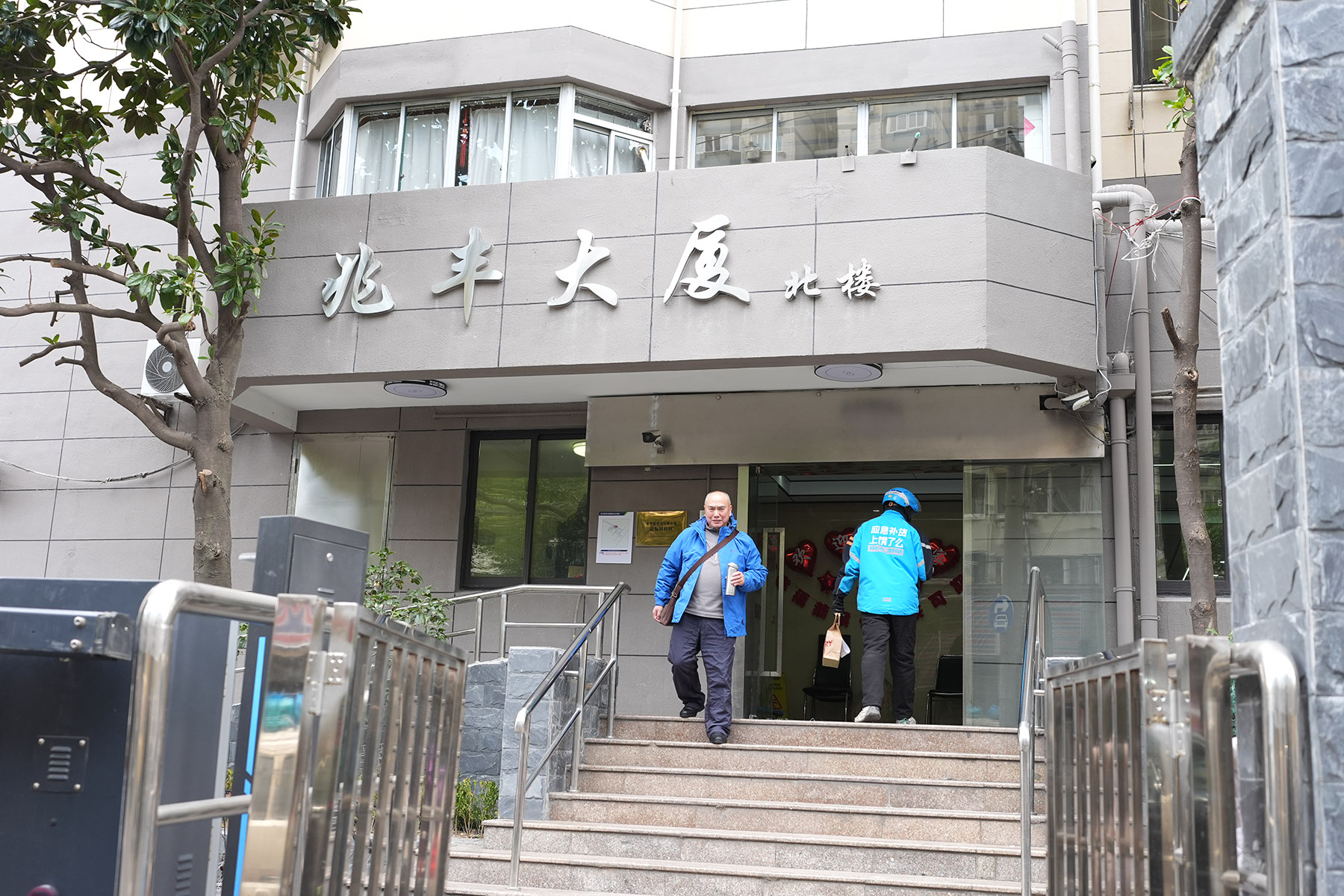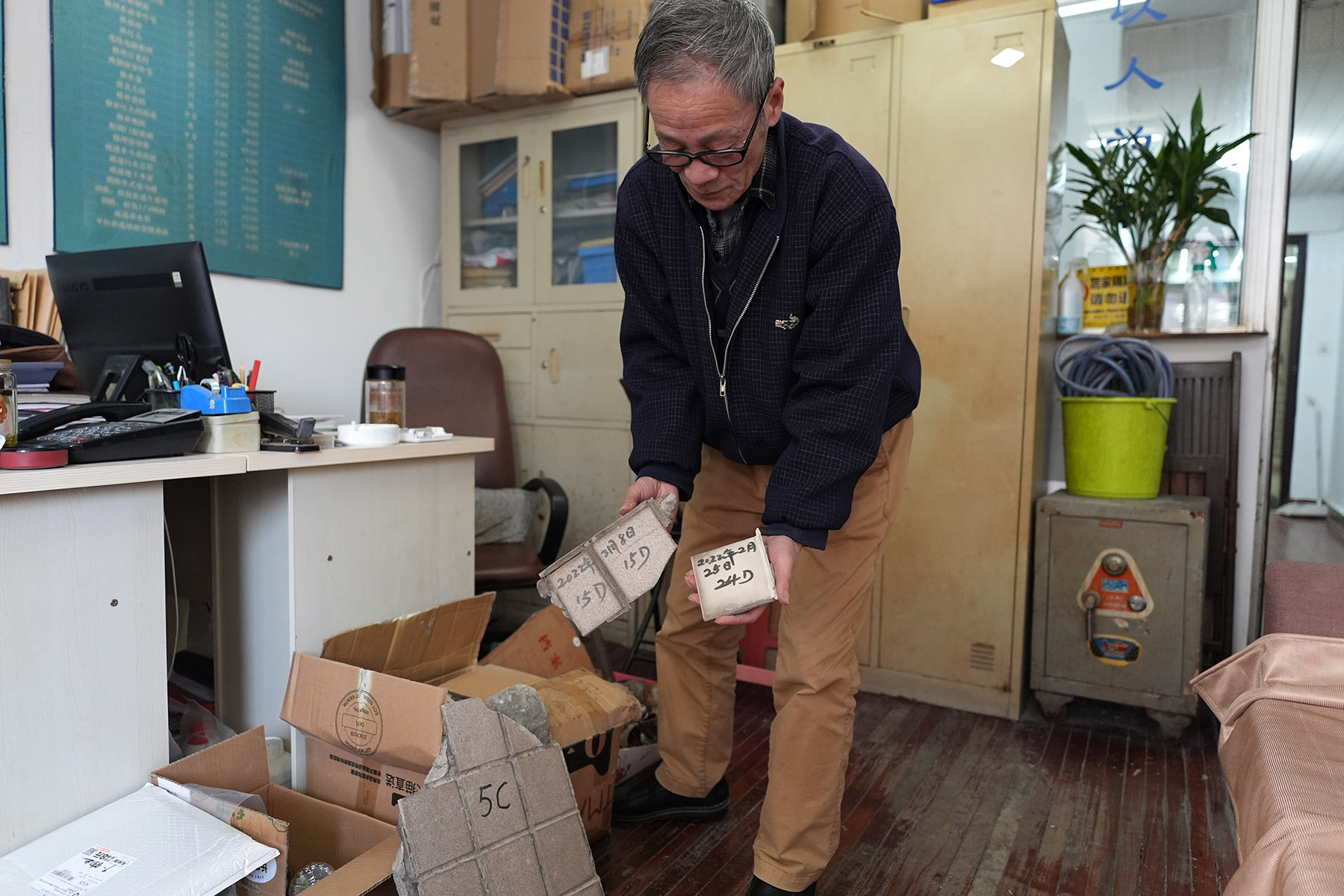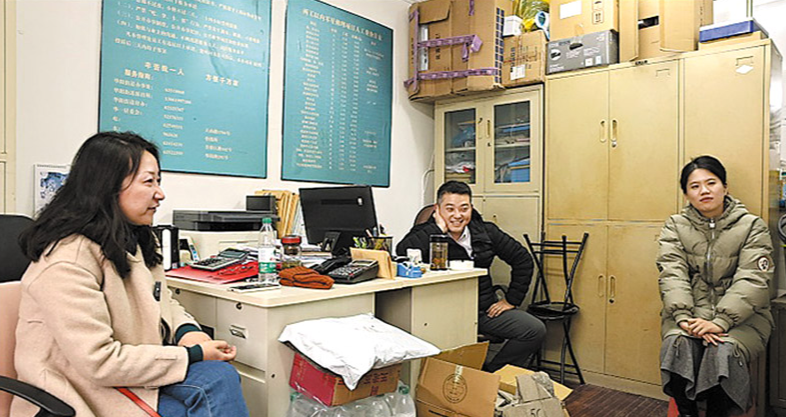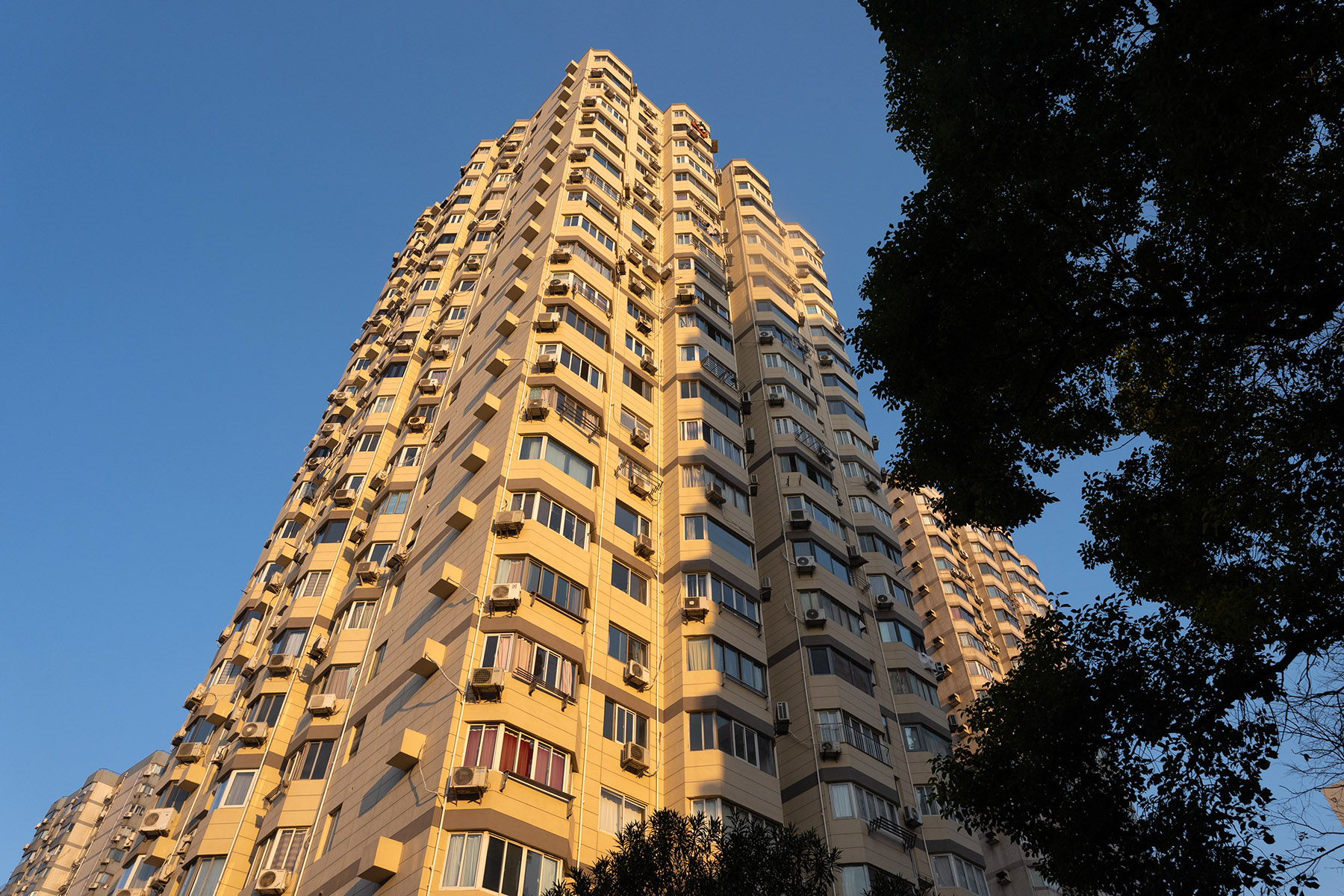New-look complex freed of safety risks from falling facade tiles

Passersby would be forgiven for thinking the 24-story Zhaofeng Building on downtown Shanghai's Changning Road is a new apartment complex, with its shining paint and tidy entrance adorned with festive greetings.
However, the building was actually built in 1993.
In November, a project to renovate the building's exterior, spearheaded entirely by the residents themselves and lasting for half a year, was completed, leaving the more than 200 residents, young and old, with a safe and completely new living environment.
READ MORE: Shanghai destination attracts thousands
"All the 95 households in the building collectively raised 1 million yuan ($137,000) for the renovation, showcasing a remarkable display of community initiative and cooperation. The community-driven efforts in achieving a common goal have also fostered a sense of unity and pride among the residents," said 41-year-old resident Liu Guanglei.
"The community initiative to renovate the building was spontaneously generated from within the resident community, and derived from people's pursuit of a better life in the new times. People want a pleasant environment not only within their homes but also the entire surroundings in their everyday life," he said.
Residents recalled that safety concerns regarding falling tiles from the building's facade began several years ago and became more frequent in 2020. The building's exterior of mosaic tiles was considered by some to be a symbol of style.
All the households in the building — with at least one individual representing each household — are members of a WeChat group for daily communication and information sharing. After some residents shared a case of falling tiles from a building's exterior that had taken people's lives, they became aware that they could not ignore such safety hazards anymore.
An obstacle was that government authorities could not provide funding due to the high-rise building's history, as the apartments were sold to those from outside the Chinese mainland in the first days. The residents had to come together to fund the much-needed renovation on their own.
For cost control, their first attempt in 2021 was to temporarily extend a steel wire mesh from the second floor. However, third-party evaluations later showed that the equipment was not strong enough to stop falling tiles.
At the building's property management office, maintenance worker Liu Shouliang filled a cardboard box with fallen tiles. On each of them, he recorded the date they fell and where from. There were tiles falling from both the lower and higher floors.

Some were quite fragmented, and others were as big as a laptop, he said.
"Several pieces of tiles smashed into the cars parked downstairs," he said, recalling that one tile, according to the video surveillance, hit a drying rack while falling and cracked the sunroof of a car. The drying rack also fell and pierced the driver's window and seat.
"It was startling. That happened not long after the owner of the car had gotten out. If there was someone in or around the vehicle at that time, it could have been an irreparable tragedy," he added.
In the WeChat group, safety hazards from falling tiles were one of the most frequently discussed topics among the residents. The initiative to carry out the renovation with collective funding from the residents gradually took shape.
Liu Guanglei was one of the residents who volunteered to lead the innovation project. He said that he hoped to eliminate safety hazards as he and four other family members, including his elderly mother and two children, live in the building.
"Having lived here for nearly a decade also gave me a sense of belonging. I want to do some real things for the neighbors," said resident Liu.

The renovation began in the latter half of 2022. A professional team from a State-owned company in the construction design sector was invited to the apartment complex to introduce its renovation plan, including the detailed methods and processes of the face-lift. However, the 3-million-yuan quote for the project, had some residents concerned about the cost.
Most of the around 10 residents who expressed opposition were seniors. Their common view was to save money, said Bao Li, secretary of the Party branch of the residential community where the building is located.
She said that some elderly residents suggested just fixing the places where safety hazards were found. But others disagreed, saying it would cause color variation on the facade and would not stand the test of time.
"Young and middle-aged residents usually showed support and were willing to spend more money. They hoped to pay for a better renovation plan although it might cost more," Bao said.

Residents proposed altogether four programs for the face-lift involving different processes. They reached a consensus to find a value-for-money, time-tested renovation plan that would prevent them from safety concerns for two decades.
All four programs were voted on by each household. The two with the highest votes went into another round of voting, which brought about the final renovation plan in October 2023.
Renovations of the building's facade and walkways were completed in September.
ALSO READ: Island combines tropical appeal with industrial haven
"The environment of the residential complex today is totally different from what it was. The new surrounding has opened a new page of life for all the residents here," said Wang Guanrong, 84, who has lived with his spouse in the building since 2007.
"It will be even more beautiful in spring when the vines will grow and climb up the walls," he said, adding that seeds were planted as part of a greenery program to respond to residents' requests for more greenery in the limited space of the residential complex.



